Incidence
In 2009–2013, 6,397 new cases of cancer were diagnosed in Indigenous Australians—an average of 1,279 new cases per year.
Lung cancer was the most commonly diagnosed cancer in Indigenous Australians, followed by breast cancer (in females), colorectal cancer and prostate cancer. For non-Indigenous Australians, prostate cancer was the most commonly diagnosed cancer, followed by breast cancer (in females), colorectal cancer and lung cancer.
Cancer type rankings varied for Indigenous and non-Indigenous Australians. Differences may be related to higher prevalence of cancer-related modifiable risk factors (such as smoking and alcohol consumption), poorer access to health-care services and lower uptake of screening and diagnostics testing [1,2,3,4,5].
Explore the data below for information on incidence rankings by sex.
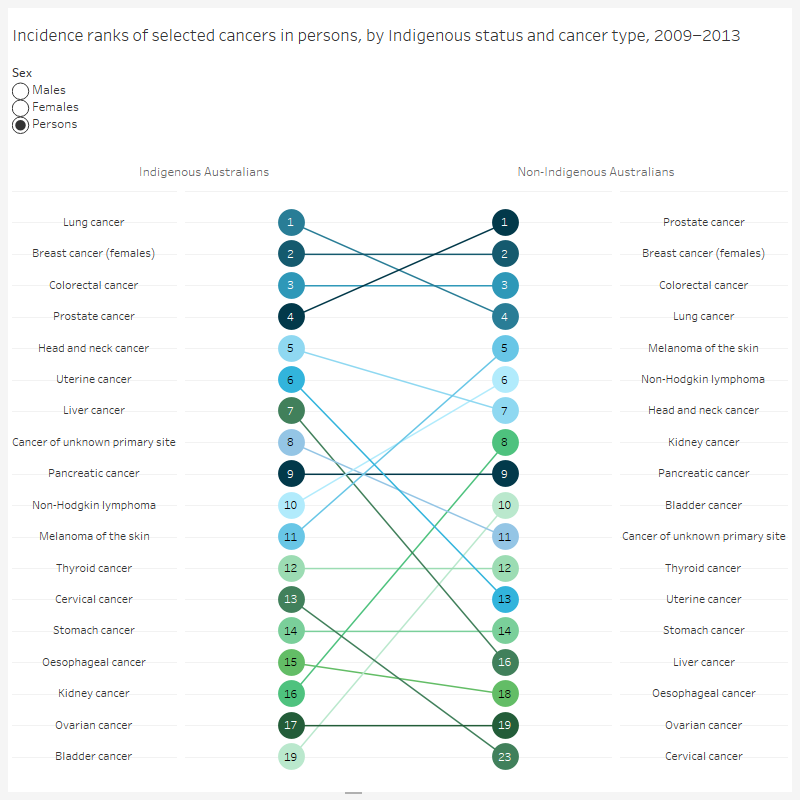
Age group
In 2009–2013, the age-specific incidence rate for all cancers combined increased with age for both Indigenous and non-Indigenous Australians. The age-specific incidence rate for all cancers combined was similar or higher in Indigenous Australians than non-Indigenous Australians for all age groups.
Explore the data below for information on incidence by cancer type, sex, Indigenous status and age group.
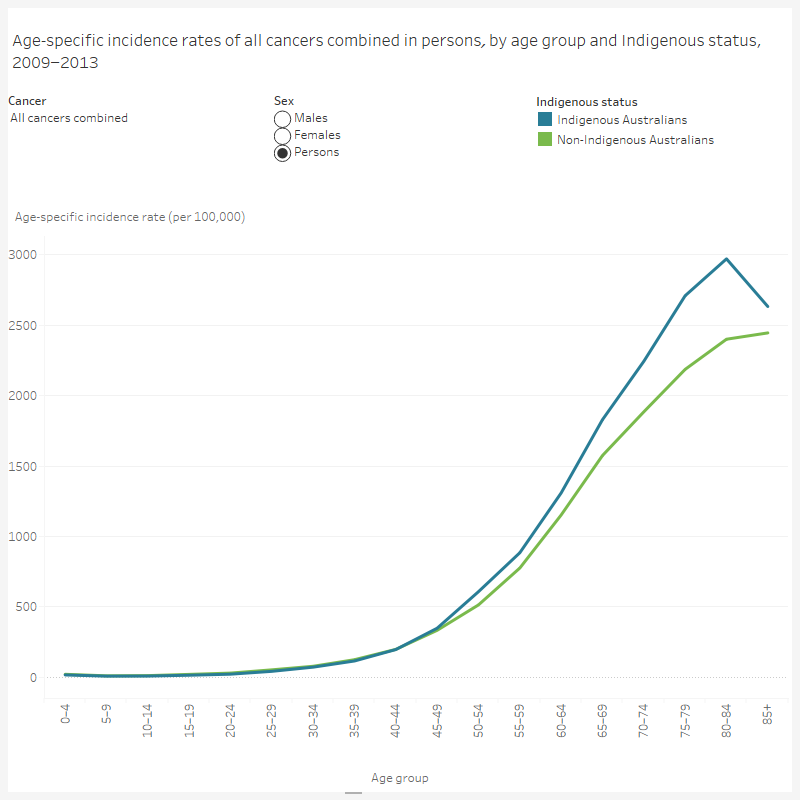
Trend
Between 1998 and 2013, the age-standardised incidence rate for all cancers combined increased from 398 to 500 new cases per 100,000 for Indigenous Australians. For non-Indigenous Australians the rate increased from 387 to 423 new cases per 100,000. Estimated trend lines indicate that the incidence rate for all cancers combined significantly increased for both Indigenous and non-Indigenous Australians.
Data for individual years have been presented for trend figures to demonstrate the variation in rates from year to year. Estimated trend lines have been applied to figures based on a least-squares regression equation where trends were found to be statistically significant. Differences between the rates for Indigenous and non-Indigenous Australians may be related to a range of factors including differences between the two populations in the prevalence of risk and/or protective factors such as smoking, alcohol consumption, access to health-care services and uptake of screening and diagnostics testing.
Explore the data below for information on incidence by cancer type, sex, Indigenous status and year.
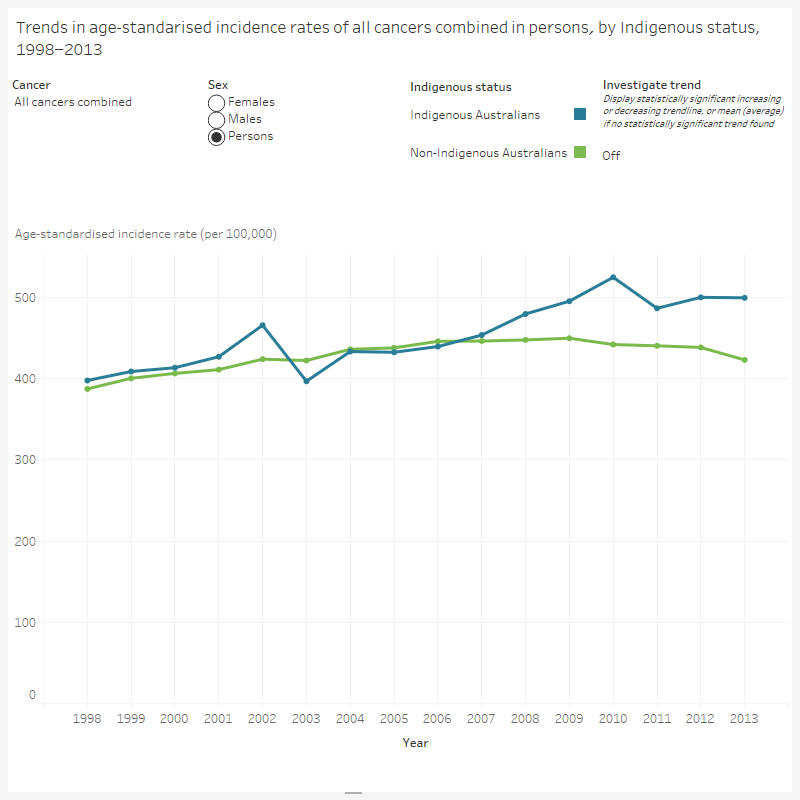
State and territory
For the jurisdictions for which data were available (see Summary or Notes section for details), the age-standardised incidence rate for all cancers combined ranged from 451 per 100,000 to 565 per 100,000 for Indigenous Australians. For non-Indigenous Australians, the incidence rate ranged from 408 per 100,000 to 471 per 100,000.
Observed differences may be due to differences in population characteristics, for example, Indigenous Australians are more likely to live in remote areas of Australia than non-Indigenous people.
Explore the data below for information on incidence by cancer type, sex, Indigenous status and state and territory.
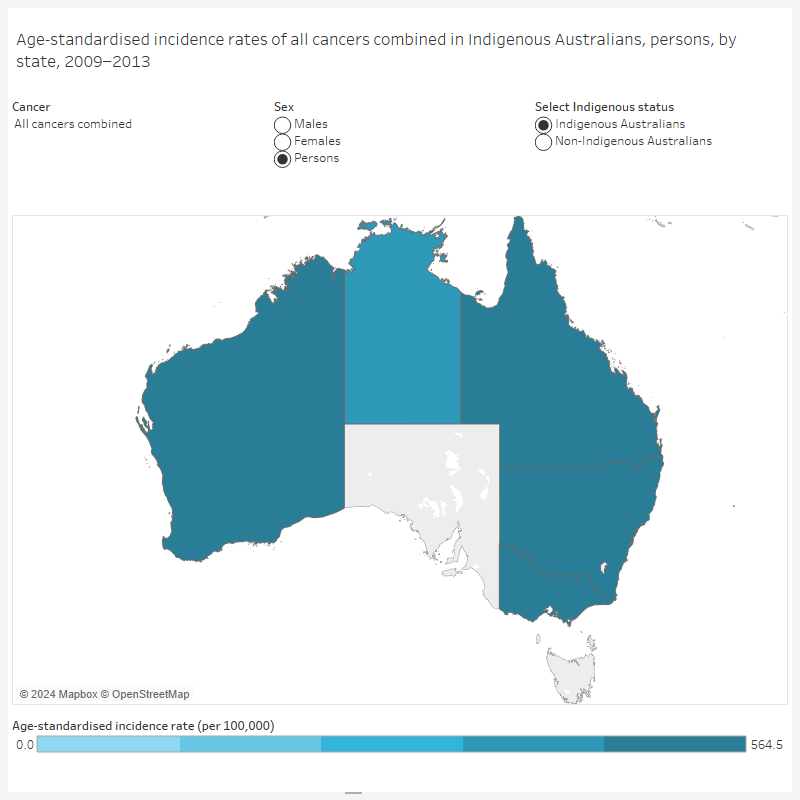
Remoteness area
In 2009–2013, the age-standardised incidence rate for all cancers combined ranged from 365 per 100,000 to 436 per 100,000 across remoteness areas for Indigenous Australians. For non-Indigenous Australians, the incidence rate ranged from 362 per 100,000 to 389 per 100,000 across remoteness areas.
Note that analysis by remoteness area is for New South Wales, Queensland, Western Australia and the Northern Territory. It excludes Victoria because the population data required were not available.
Explore the data below for information on incidence by cancer type, sex, Indigenous status and remoteness area.
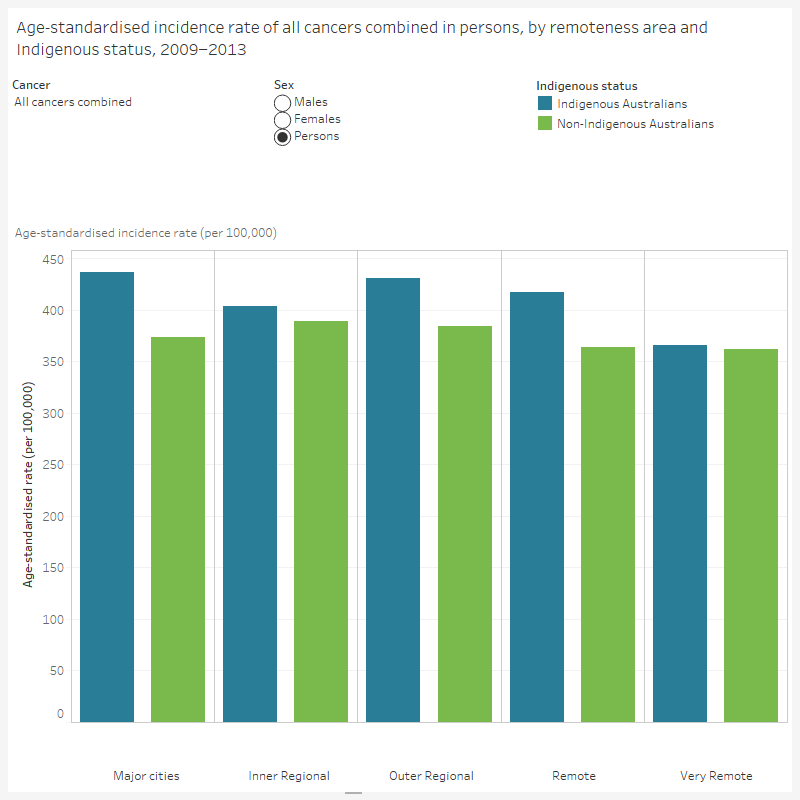
Reference
-
Condon J, Warman G & Arnold L (eds) 2001. The health and welfare of Territorians. Darwin: Epidemiology Branch, Territory Health Services.
-
Cunningham J, Rumbold AR, Zhang X & Condon JR 2008. Incidence, aetiology and outcomes of cancer in Indigenous people in Australia. Lancet Oncology 9:585–95.
-
AIHW & CA 2013. Cancer in Aboriginal and Torres Strait Islander peoples of Australia: an overview. Cancer series no. 78. Cat. no. CAN 75. Canberra: AIHW.
-
Roder D 2005. Comparative cancer incidence, mortality and survival in Indigenous and non-Indigenous residents of South Australia and the Northern Territory. Cancer Forum 29.
-
Stumpers S & Thomson N 2009. Review of cancer among Indigenous peoples: Australian Indigenous Health Infonet. Viewed 22 February, 2010, <http://www.healthinfonet.ecu.edu.au/chronic-conditions/cancer/reviews/our-review>.
-
Threlfall TJ & Thompson JR 2009. Cancer incidence and mortality in Western Australia, 2007. Perth: Western Australian Department of Health.


